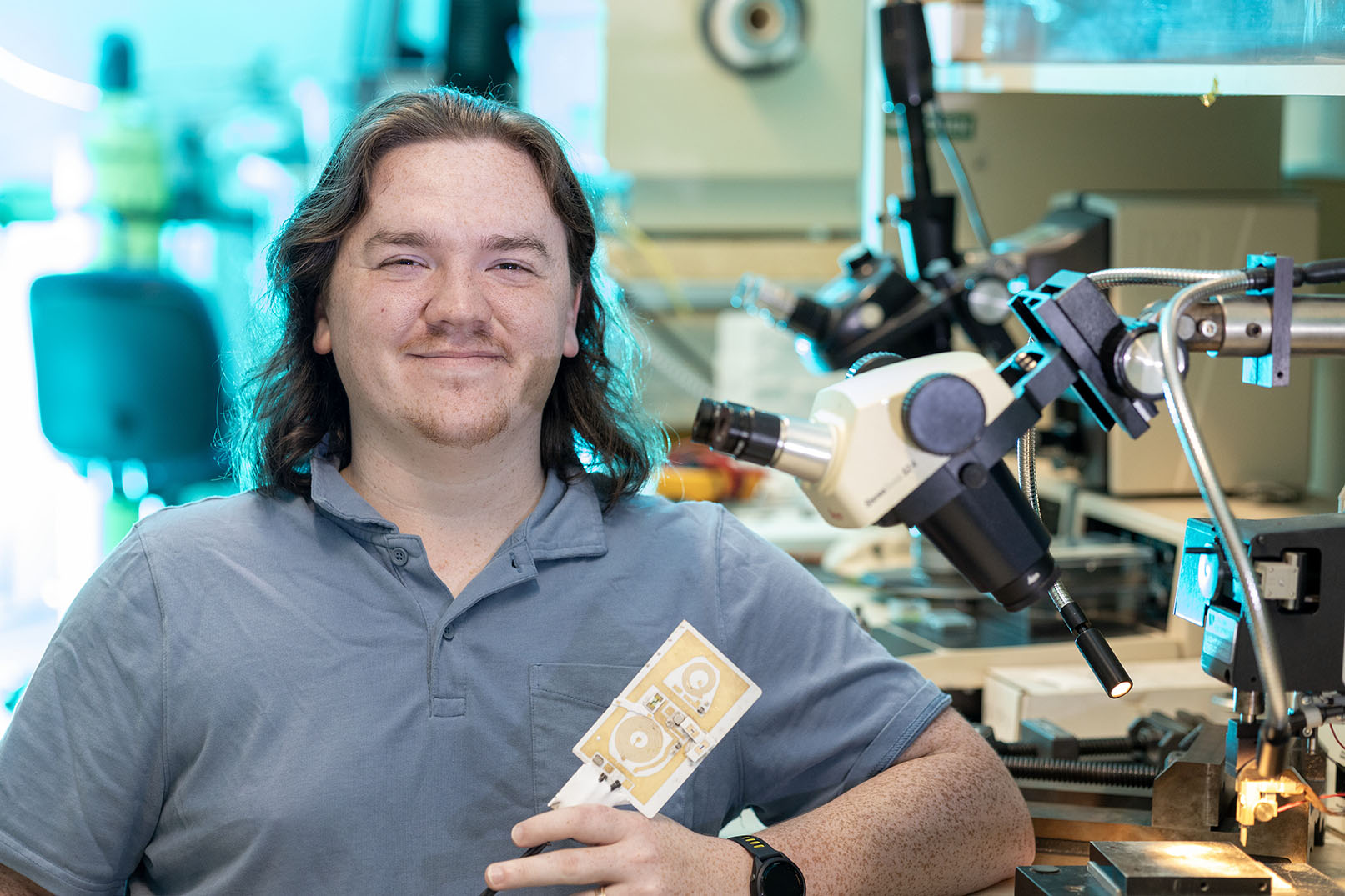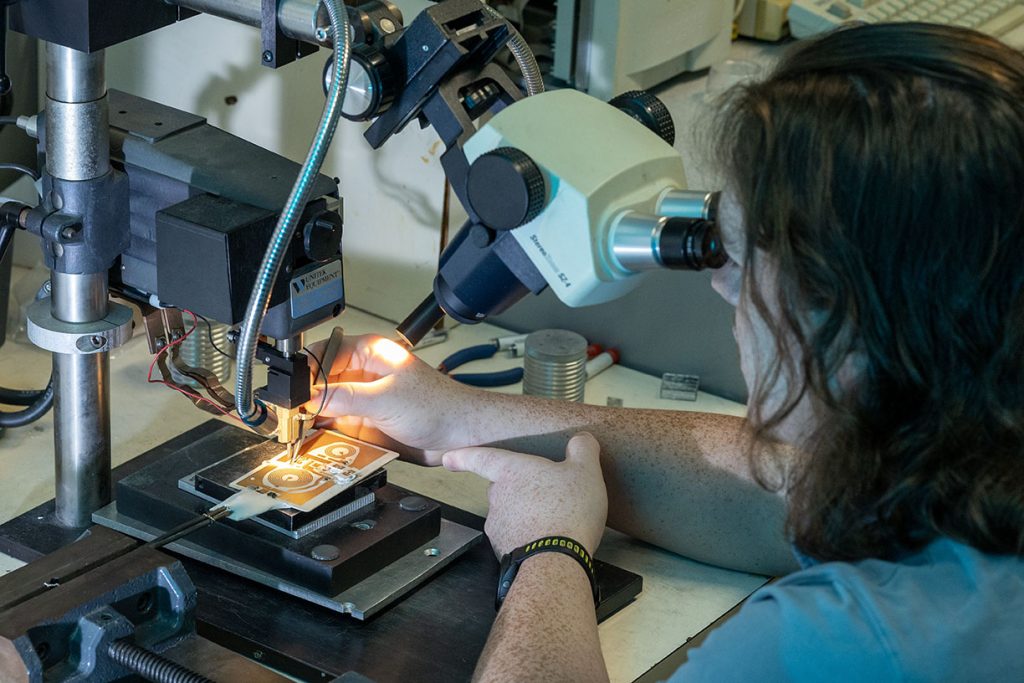
Electronics for Extreme Environments: UMaine Pushes Sensors Beyond Limits
ORONO, Maine — Imagine sensors that don’t just survive extreme heat — they turn it into power. University of Maine engineers have built a simple wireless circuit that can operate from room temperature to more than 550 degrees Fahrenheit, opening the door to rugged, self-powered monitoring systems in environments such as jet engines, oil wells and spacecraft.
In a breakthrough with sweeping industrial implications, UMaine researchers designed a minimalist oscillator that enables sensors to transmit critical data wirelessly in environments where people, and conventional electronics, cannot survive.
“This work is important because of the potential applications, especially in terms of industrial safety. Not only does constant monitoring in industrial applications allow for more efficient operation with minimal production time loss, but it maximizes safety for human operators by removing the possibility of a surprise failure” said lead author Jude Zanoni, an electrical engineering graduate student and lead author on the study. “By using commercial components, we also demonstrated a potential avenue for cheap development of this technology.”

The research contributes to solving a decades-old problem: how to keep electronics stable in extreme heat without complex biasing, bulky power supplies or fragile components. Traditional silicon devices fail well below 300 degrees, forcing industry to rely on expensive, short-lived or wired systems in high-temperature operations. UMaine’s solution is different — a single-supply oscillator built with one silicon carbide transistor, delivering more than 12 dBm of output power to extend detection range and reliability.
“This is about building electronics that don’t just survive the heat, they could make it useful,” Zanoni. “The circuit produces the same amount of power as a pair of Bluetooth earbuds — but it keeps working at more than 570 degrees Fahrenheit.”
By reducing parts and stabilizing operation under uniform high-temperature testing, the UMaine circuit produced up to nine times the power of previous designs at room temperature and nearly doubled at nearly 500 degrees. In practical terms, that’s like turning a walkie-talkie that only works across your yard into one that can reach across your neighborhood. At extreme heat, it still boosts detection range by about 50 percent, meaning problems can be spotted earlier and from farther away. Because the design can be paired with thermoelectric generators, these sensors could power themselves from the very heat they monitor, which eliminates the need for batteries or wires and makes them easier to deploy in remote or dangerous places.
Zanoni, originally from Lubec, Maine, came to UMaine where he participated in a Research Experience for Undergraduates program introducing him to this research. He continued on to complete his undergraduate Honor’s Thesis on this topic and will continue to study high temperature, harsh environment sensing in pursuit of a PhD at UMaine.
The research, demonstrating robust modeling and successful fabrication under realistic harsh-environment testing, was recently published in IEEE Access under the title “Room Temperature to 300°C SiC MOSFET Oscillator Under Fixed Bias.”
Contact: Taylor Ward, taylor.ward@maine.edu
